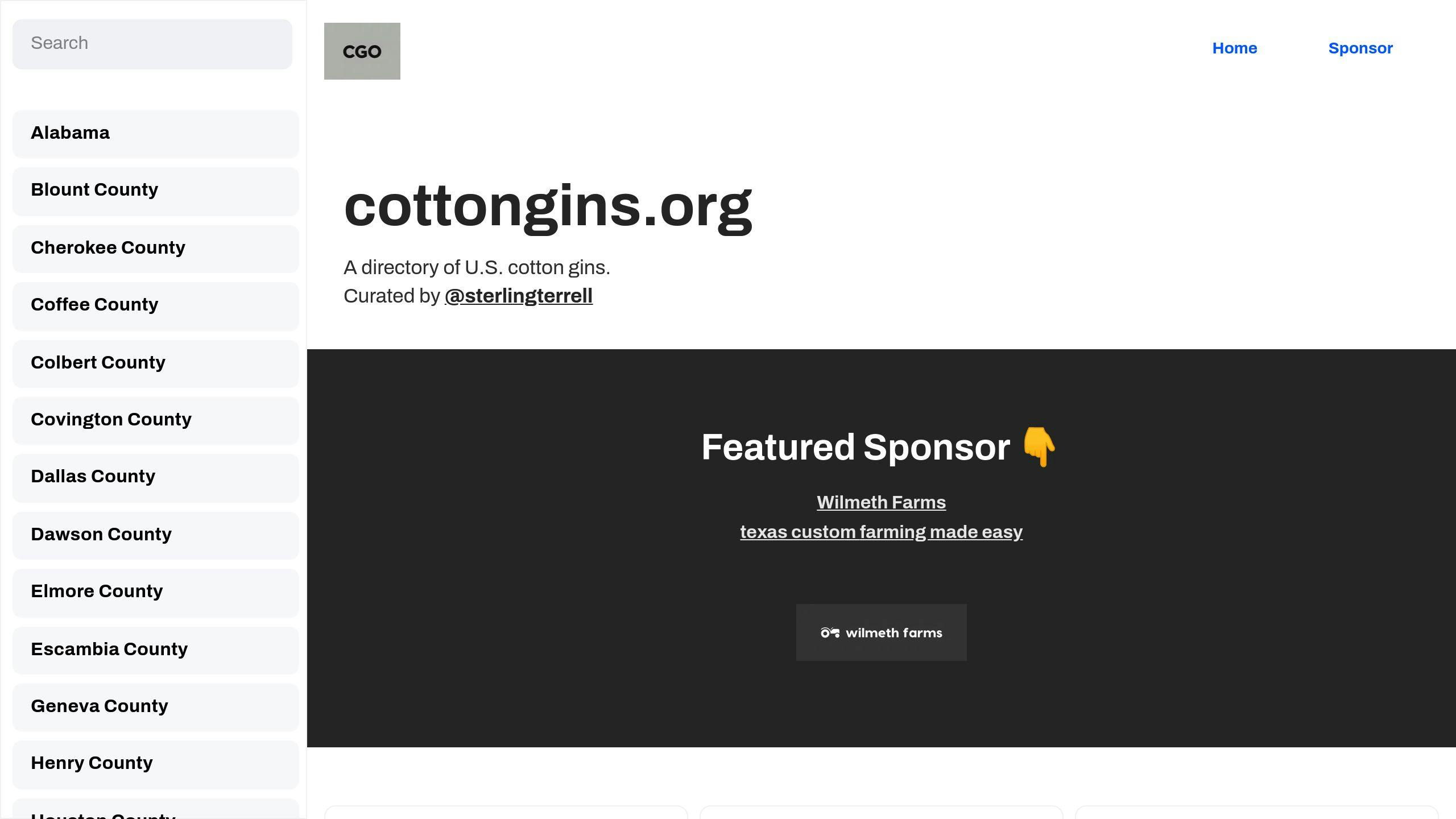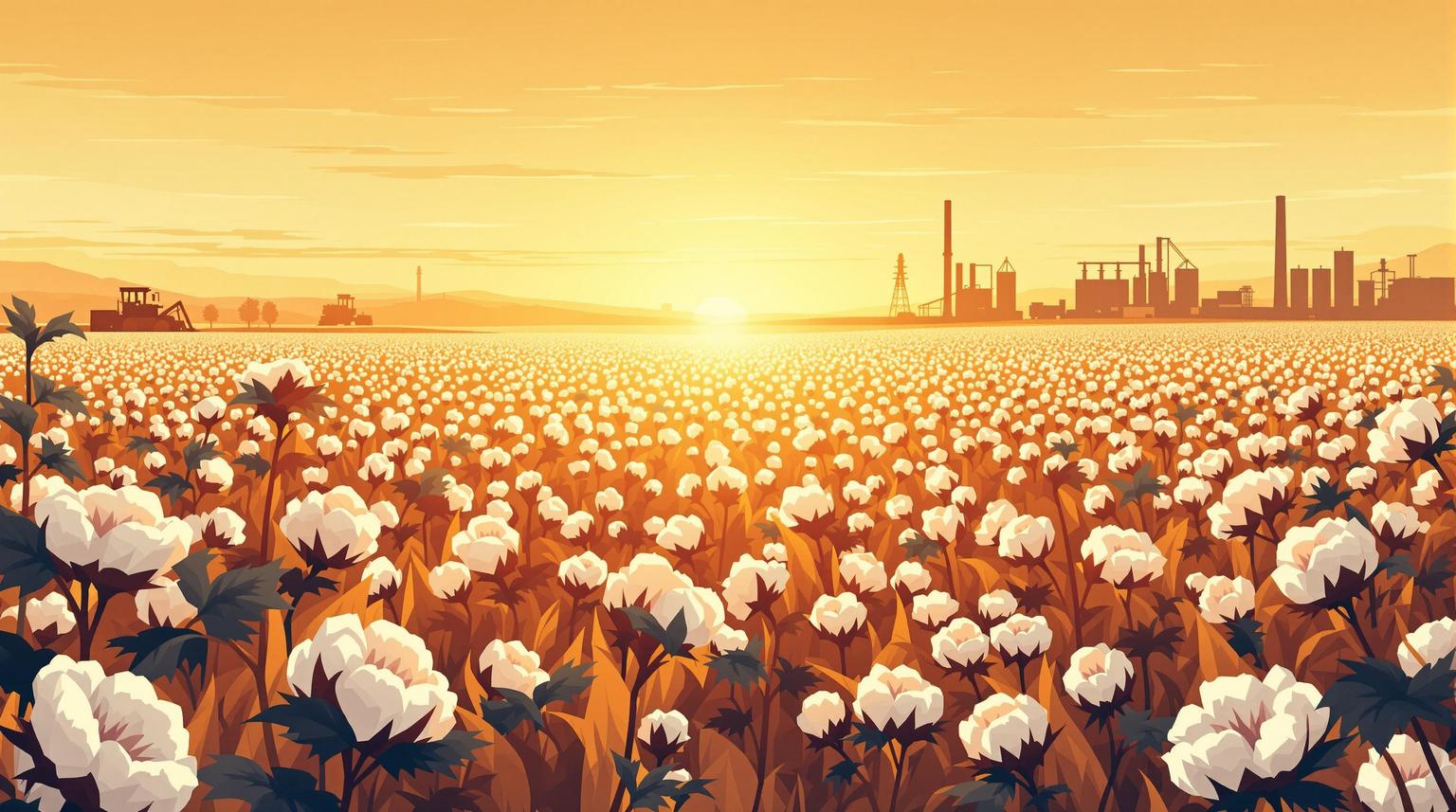Cotton farming requires careful attention to each stage of the crop cycle. Here’s a quick breakdown of the process from planting to harvest:
- Seed Selection & Planting: Choose seeds suited to your climate and soil. Plant when soil reaches 60°F, and ensure moisture levels are consistent.
- Growth Stages:
- Seedling Emergence: Occurs 4–14 days after planting.
- Vegetative Growth: Focus on nutrient management and root development.
- Square Formation: Begins ~35 days post-planting; prioritize pest control and water management.
- Boll Development: Lasts 50–60 days after flowering; maintain nutrient balance and monitor temperature.
- Harvesting: Begins ~150–160 days after planting. Proper defoliation and dry weather ensure efficient mechanical harvesting.
- Post-Harvest Care: Store cotton properly, clear fields, test soil, and maintain equipment for the next season.
Quick Timeline
| Stage | Duration | Key Focus |
|---|---|---|
| Germination | 4–14 days | Soil temperature (60°F+) |
| Square Formation | ~35 days post-planting | Nitrogen application |
| Flower to Boll | 50–60 days | Irrigation and nutrient balance |
| Harvest | ~150–160 days | Timing and defoliation |
By managing each phase and leveraging tools like satellite monitoring, you can maximize yields and minimize risks. Keep reading for detailed tips and strategies.
Steps in the Cotton Crop Cycle
Choosing Seeds and Planting
The first step in cotton farming is selecting seeds that match your climate and soil type. For successful germination, plant seeds when the soil consistently reaches at least 60°F (15.5°C). Place seeds 0.5 to 1.5 inches deep, ensuring they are protected from weather fluctuations. Maintaining steady soil moisture is key - keep a close eye on moisture levels during this stage.
After planting, the focus shifts to guiding the seedlings through their growth phases.
Growth Stages of Cotton
Cotton seedlings typically emerge 4 to 14 days after planting, depending on environmental conditions. During the vegetative stage, the plant develops a strong root system and main stem, which are critical for future yields.
Around 35 days after planting, the reproductive phase begins with the formation of squares (flower buds). These squares take about 20 to 25 days to develop into flowers. The most important stage follows: boll development. This process takes 50 to 60 days from flowering to full maturity.
| Growth Stage | Timeline | Key Focus |
|---|---|---|
| Germination | 4-14 days | Soil temperature at 60°F+ |
| Square Formation | ~35 days post-planting | Nitrogen application |
| Square to Flower | 20-25 days | Irrigation management |
| Boll Maturation | 50-60 days | Temperature monitoring |
By carefully managing each stage, the cotton plant will reach full maturity and be ready for harvest.
Harvesting and After-Harvest Care
Harvest typically begins 150 to 160 days after planting, as the bolls open to reveal the cotton fibers. Properly timed defoliation, supported by tools like Farmonaut's satellite systems, can make mechanical harvesting more efficient.
After harvesting, follow these steps for post-harvest care:
- Build and store cotton modules correctly to preserve fiber quality.
- Clear fields to prevent pests from surviving through the winter.
- Conduct soil testing to prepare for the next planting season.
- Clean and maintain equipment to ensure readiness for future use.
The entire cotton growth cycle lasts about 180 days from emergence to harvest, though this timeline can vary based on regional conditions and the chosen variety. Consistent monitoring and management throughout each stage are essential for a successful yield.
How Cotton Grows
Factors That Affect Cotton Growth
Cotton growth depends on a mix of environmental conditions and management practices. Key elements include climate, soil health, and pest management.
Impact of Climate and Temperature
Temperature plays a key role in every stage of cotton's life cycle, from germination to harvest. For germination, cotton needs temperatures of at least 60°F, while vegetative growth thrives between 65–85°F. Farmers often use DD60s (degree days above 60°F) to track growth stages and make informed decisions. For example, cotton typically emerges after reaching 50 DD60s, which usually happens 4–9 days after planting.
| Growth Stage | DD60 Requirements |
|---|---|
| Germination | 50 DD60s |
| Vegetative Growth | Varies by variety |
| Boll Development | 850+ DD60s total |
Soil Health and Nutrients
Cotton requires specific nutrients during different growth stages. Nitrogen is essential during vegetative growth to support leaves and stems, phosphorus aids early root development, and potassium enhances boll formation and fiber quality. Tools like satellite imagery are now used to spot nutrient deficiencies, enabling precise fertilizer applications that improve yields while cutting unnecessary costs.
Managing Pests and Diseases
Integrated Pest Management (IPM) is a balanced approach to controlling pests. It combines biological methods, crop rotation, and selective use of chemicals. Regular field inspections help farmers catch potential problems early, ensuring timely action. Additionally, weather stations linked to irrigation systems help maintain proper soil moisture, reducing stress on plants and lowering the risk of diseases.
sbb-itb-0e617ca
Tools and Methods for Better Cotton Farming
Using Tools for Crop Monitoring
Platforms like Farmonaut use satellite imaging paired with AI to give farmers a clear picture of crop health. Through NDVI (Normalized Difference Vegetation Index) monitoring, these tools track key factors like soil temperature and moisture. This data helps farmers make smarter decisions about planting and crop management.
AI advisory systems take things further by analyzing multiple data points to predict issues before they escalate. These tools are especially helpful during critical growth stages, such as flowering, when crops are most vulnerable.
Once monitoring is in place, the focus shifts to managing water and nutrients effectively.
Managing Water and Nutrients
Modern cotton farming uses advanced tools to keep soil moisture and nutrients in check. For example, soil moisture sensors guide irrigation decisions, ensuring crops get the water they need without waste.
| Tool Type | Primary Function | Benefits |
|---|---|---|
| Soil Testing Kits | Detect nutrient deficiencies | Supports precise interventions |
| NDVI Sensors | Track plant health | Improves growth management |
| Variable Rate Applicators | Distribute fertilizers evenly | Boosts nutrient efficiency |
Keeping soil hydrated and nutrient-rich is only part of the equation. Protecting crops from pests is just as critical.
Pest Control Strategies
Integrated Pest Management (IPM) blends various tactics to safeguard cotton while reducing reliance on chemicals. This approach includes regular field checks and using biological methods before resorting to chemical treatments.
AI-powered systems now play a big role by spotting pest patterns and predicting outbreaks. These tools allow farmers to act quickly and effectively, complementing traditional pest control methods.
To keep pests under control, farmers should:
- Regularly inspect fields using both manual and digital tools
- Keep detailed records of pest activity and treatment outcomes
- Choose pest-resistant cotton varieties when available
- Introduce natural predators like ladybugs and lacewings to manage pests organically
Summary and Additional Resources
Let’s wrap up the key points and highlight some helpful resources to guide you in cotton farming.
Key Points About the Cotton Crop Cycle
Effective cotton farming involves keeping a close eye on growth stages, managing conditions, and leveraging modern tools like AI and satellite systems. By blending thoughtful planning with advanced technology, farmers can improve yields while prioritizing sustainable methods.
Here are the main elements of success:
- Timing interventions to match each growth stage
- Managing environmental factors effectively
- Using advanced monitoring tools
- Adopting pest control strategies that cover all bases
Explore cottongins.org

For U.S. cotton farmers, cottongins.org is a go-to resource. It offers a variety of tools to stay informed and connected:
| Resource Type | What It Offers |
|---|---|
| Gin Directory | Nationwide locations of cotton gins |
| Industry Updates | News and the latest farming practices |
| Networking | Opportunities to build industry ties |
This platform keeps farmers updated with critical developments and provides easy access to processing facilities and industry news.
Practical Tips for Cotton Farmers
The cotton industry supports more than 100 million people globally [1]. To thrive, focus on:
- Regular soil testing and managing nutrients
- Using weather data for informed decisions
- Tracking yields consistently to improve over time
Organizations like the USDA and ICAC offer tools and insights, including market trends, grading standards, and global data [2][3]. When paired with sustainable methods and advanced tools, these resources can help farmers achieve better outcomes throughout the crop cycle.
Check out the FAQs below for more actionable advice on cotton farming.
FAQs
What is the modern way of picking cotton?
Modern cotton harvesting has come a long way, thanks to advanced tools and techniques. Farmers now rely on cotton strippers, machines designed to efficiently remove bolls after plants are prepared through natural or chemical defoliation. Harvesting usually takes place 150-160 days after planting, depending on local conditions.
This process is the result of careful planning and management throughout the crop cycle, from selecting seeds to nurturing boll development. Here's how it works:
- Plant Preparation: Plants are treated with natural or chemical defoliants to shed their leaves before harvesting.
- Mechanical Harvesting: Cotton strippers are used to efficiently gather bolls, especially from hardier cotton varieties.
Farmers also keep a close eye on weather forecasts, ensuring they harvest during dry conditions to protect cotton quality. Proper defoliation and timing are key to minimizing field losses and maintaining fiber standards.
| Harvesting Factor | Best Practice |
|---|---|
| Timing | Align harvest with weather and maturity |
| Field Preparation | Ensure complete defoliation beforehand |
| Weather Conditions | Focus on harvesting during dry periods |
These methods have made it easier to harvest efficiently over large areas while preserving the quality of the cotton.


